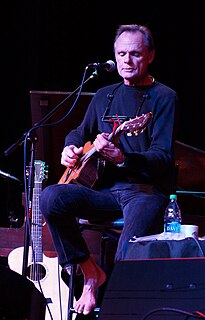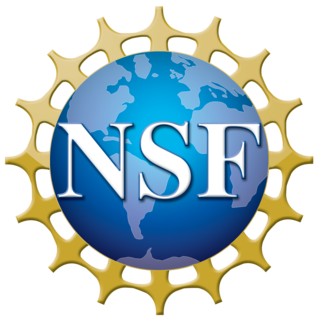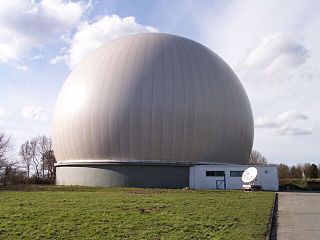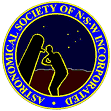Related Research Articles

Sputnik 1 was the first artificial Earth satellite. It was launched into an elliptical low Earth orbit by the USSR on 4 October 1957 as part of the Soviet space program. It orbited for three weeks before its batteries died and then orbited silently for two months before it fell back into the atmosphere on 4 January 1958.

Jonathan Edwards is an American singer-songwriter and musician best known for his 1971 hit single "Sunshine".

The National Science Foundation (NSF) is an independent agency of the United States government that supports fundamental research and education in all the non-medical fields of science and engineering. Its medical counterpart is the National Institutes of Health. With an annual budget of about $8.3 billion, the NSF funds approximately 25% of all federally supported basic research conducted by the United States' colleges and universities. In some fields, such as mathematics, computer science, economics, and the social sciences, the NSF is the major source of federal backing.
Contemporary classical music is classical music composed close to the present day. At the beginning of the 21st century, it commonly referred to the post-1945 modern forms of post-tonal music after the death of Anton Webern, and included serial music, electronic music, experimental music, and minimalist music. Newer forms of music include spectral music, and post-minimalism.

The Kopernik Observatory & Science Center (KOSC), is a public observatory in Vestal, New York opened to the public on 16 June 1974 by the Kopernik Society of Broome County to commemorate the 500th anniversary of the birth of the astronomer Nicolaus Copernicus in 1973. Its mission is to offer hands-on investigations and outreach programs for educating all ages about astronomy and science using advanced optical telescopes, computers and other tools. It is the first science laboratory facility in New York State designed for K-12 teachers, students and their families, and has been one of the best-sited and best equipped public observatories in the Northeast United States for nearly the last 40 years.

The Smithsonian Astrophysical Observatory (SAO) is a research institute of the Smithsonian Institution, concentrating on astrophysical studies including galactic and extragalactic astronomy, cosmology, solar, earth and planetary sciences, theory and instrumentation, using observations at wavelengths from the highest energy gamma rays to the radio, along with gravitational waves. Established in Washington, D.C., in 1890, the SAO moved its headquarters in 1955 to Cambridge, Massachusetts, where its research is a collaboration with the Harvard College Observatory (HCO) and the Harvard University Department of Astronomy. In 1973, the Smithsonian and Harvard formalized the collaboration as the Center for Astrophysics | Harvard & Smithsonian (CfA) under a single Director.

The Carnegie Museum of Art, abbreviated CMOA, is an art museum in the Oakland neighborhood of Pittsburgh, Pennsylvania. The museum was founded in 1895 by the Pittsburgh-based industrialist Andrew Carnegie. The museum collects contemporary art, including film and video works. It was the first museum in the United States with a primary focus on contemporary art. As instructed by its founder Andrew Carnegie at the inception of the Carnegie International in 1896, the museum has been organizing many contemporary exhibitions that showcase the "Old Masters of tomorrow".

The Center for Astrophysics | Harvard & Smithsonian (CfA) is an astrophysics research institute jointly operated by the Harvard College Observatory and Smithsonian Astrophysical Observatory. Founded in 1973 and headquartered in Cambridge, Massachusetts, the CfA leads a broad program of research in astronomy, astrophysics, Earth and space sciences, as well as science education. The CfA either leads or participates in the development and operations of more than fifteen ground- and space-based astronomical research observatories across the electromagnetic spectrum, including the forthcoming Giant Magellan Telescope (GMT) and the Chandra X-ray Observatory, one of NASA's Great Observatories.
Breaking Vegas is a television series that premiered on The History Channel in the United States in the spring of 2004. The series covers the great lengths people have gone to make money, sometimes illegally, from casinos. It premiered in Pakistan on January 19, 2006 and was renamed Decoding Casinos in India on May 9, 2006. In the Spring of 2007, it aired on The History Channel and The Discovery Channel in Canada.
Dorion Sagan is an American author, essayist, fiction writer, and theorist from Madison, Wisconsin. He has written and co-authored books on culture, evolution, and the history and philosophy of science, including Cosmic Apprentice,Cracking the Aging Code, and Lynn Margulis: The Life and Legacy of a Scientific Rebel. His book Into the Cool, co-authored with Eric D. Schneider, is about the relationship between non-equilibrium thermodynamics and life.
Mark Harris may refer to:
Sadie Coles HQ is a contemporary art gallery in London, owned and directed by Sadie Coles. The gallery focuses on presenting the work of established and emerging international artists. It was at the forefront of the Young British Artists movement.
Monster Squad is a television series produced by D'Angelo-Bullock-Allen Productions that aired Saturday mornings on NBC from September 11, 1976 to September 3, 1977. It is unrelated to the later film of the same name.
Odland can mean
The Prince Albert Radar Laboratory (PARL) was a radar research facility operated by the Defence Research Telecommunications Establishment (DRTE), part of the Canadian Defence Research Board. Its primary purpose was to test long-range radio propagation and radar techniques in the presence of the aurora borealis. This was part of a greater ABM effort being carried out in concert with the United States Air Force, and PARL operated along with two similar instruments at the Rome Air Development Centre and MIT Lincoln Laboratory. The site continues to operate today, used as a satellite downlink station known as the Prince Albert Satellite Station (PASS).
The MIT Computation Center was organized in 1956 as a 10-year joint venture between the Massachusetts Institute of Technology and IBM to provide computing resources for New England universities. As part of the venture, IBM installed an IBM 704, which remained at MIT until 1960.
Hubert's Brain, made in 2001, is the first and only computer-generated film made by San Francisco digital media company Wild Brain. The movie is 17 minutes long, took one year and $3,000,000 to produce, and the movie won the 2001 Annie Award for Outstanding Achievement in an Animated Short Subject. It tells the story of a science geek who befriends a talking brain-in-a-jar.

Jonathan Harris is an Internet artist and designer living in Brooklyn, New York.

Bochum Observatory, often known in Bochum as Cape Kaminski is a research institute in Bochum, Nordrhein-Westfalen, Germany. The institution came into being through a private initiative. Its main areas of interest are in radio astronomy and environmental research.

The Astronomical Society of New South Wales (ASNSW) is an amateur astronomy club in the state of New South Wales, Australia. It was founded in 1954 and it has over 400 members.